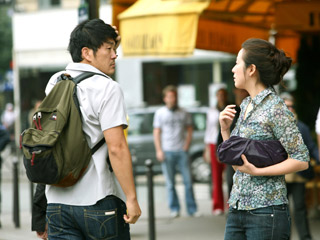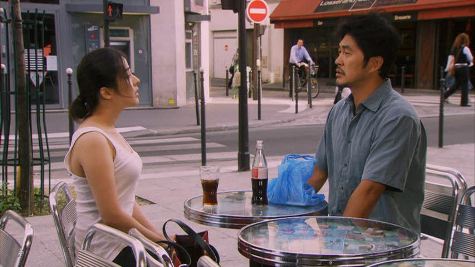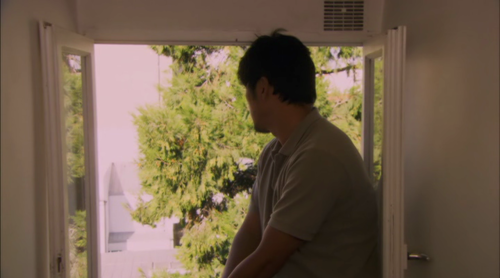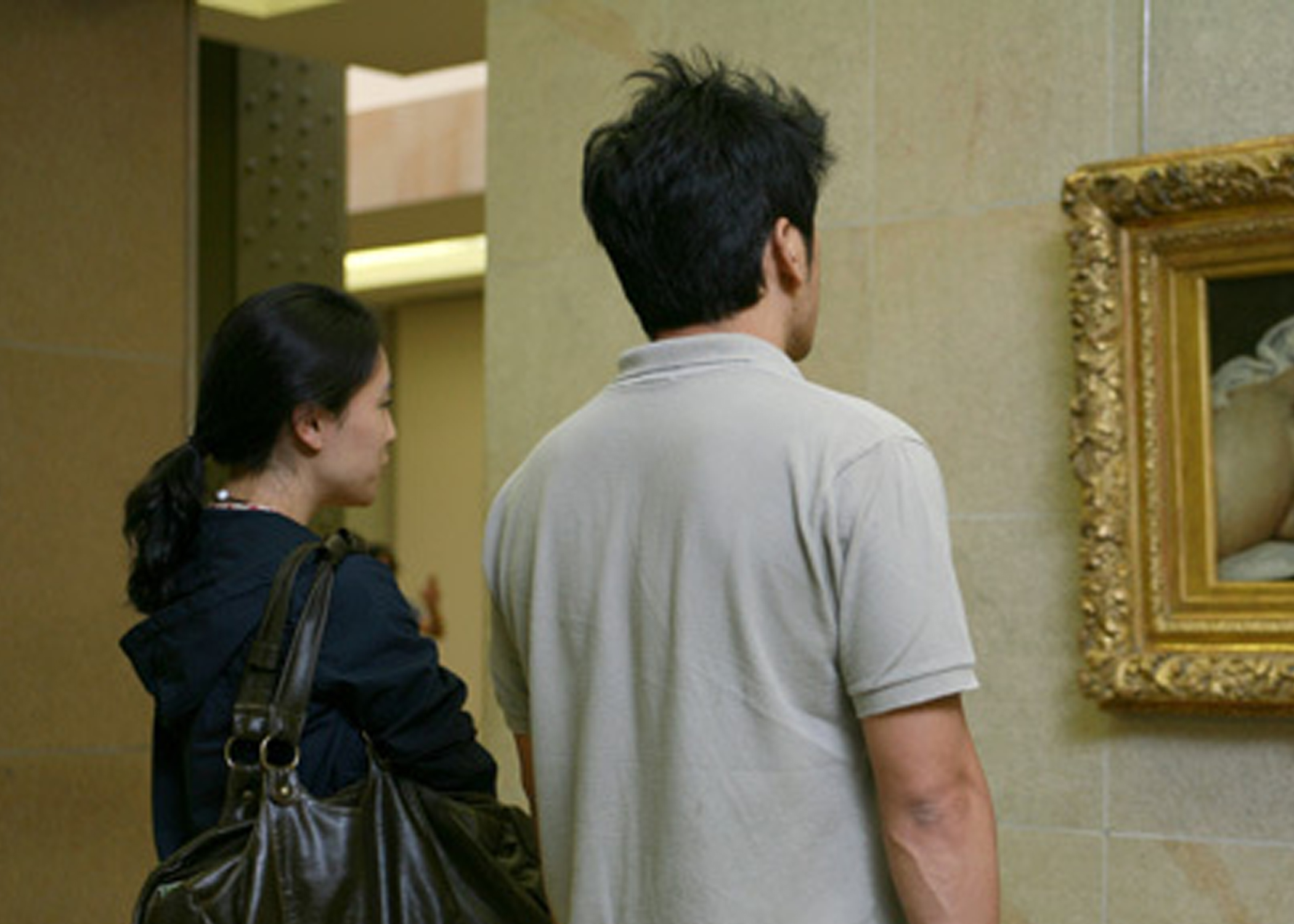The Korean filmmaker Hong Sang-soo has always been influenced by the works of French New Wave director Eric Rohmer, so it’s only fitting that he would eventually make a film set in France. That film turned out to be 2008’s Night and Day, a brilliant and witty comedy of manners.
Night and Day takes the European feel of his Korean set films and places them in Paris, which was the setting for many seminal films from the French New Wave era, such as Suzanne’s Career, Masculin Feminin, and The Mother and the Whore. Like these films, Night and Day is a nuanced and cerebral film that contains long, extended shots of dialogue set among the cafes and apartments of Paris. Indeed, the city of Paris becomes a third character in the film, one which both constrains and liberates the central characters.
Night and Day is about Seong-nam (Kim Yeong-ho), a middle-aged, married painter living in Korea who gets in trouble with the law when he is caught smoking marijuana. He flees Korea to live in a hostel in Paris, where he meets and falls in love with Yu-jeong (Park Eun-hye), an attractive, much younger art student. A moral dilemma ensues as Seong-nam finds himself steadily more obsessed with Yu-jeong, while trying to remain faithful to his wife, whom he calls every night.
Unlike the more romantic version of Paris portrayed in American films like Midnight In Paris and Henry and June, Night and Day presents a more realistic and grounded portrait of the French city. Hong Sang-soo is more interested in exploring the everyday, mundane life of Paris, carefully observing Parisians in the park exercising or buying medicine at a drugstore, than in presenting an overly sentimentalized portrait of Paris as a city filled with bright lights and romantic encounters.
Night and Day was Hong Sang-soo's first film shot in digital video as opposed to film, creating a more documentary-like look. This resulted in the more naturalistic tone of Paris that Hong Sang-soo was going for.
The only time we see anything close to the cliché of Paris as a city of lovers is when Hong Sang-soo films a Parisian couple on a bench kissing, but this scene is shot from a distance and in the dull brightness of the day, removing the scene from any romantic connotations.
Indeed, virtually all the outdoor scenes of Paris are shot during the daytime, giving the film a more prosaic view of the Paris streets. Hong Sang-soo further distances himself from shooting the City of Lights during the more romantic nighttime when a character tells Seong-nam that it is difficult to distinguish night from day during the summertime, due to the long duration of the days.
This inability to tell night from day also symbolizes the disconnect that Seong-nam feels as an expatriate living in a foreign country. Not only is he separated from his wife in Paris, he also becomes separated from his desires in his pursuit of what he realizes is an unobtainable woman. The art student that he chases, Yu-jeong, even tells him at one point that she cannot have a relationship with him due to his marital status. Paris is no longer a mythical city where romance blooms for Seong-nam; instead it has become an emotional prison.
Thus, Hong Sang-soo is not only demystifying the overly romanticized portrait of Paris which so often occurs in American films. He is also revealing the futility and messiness of relationships, where love is possible, but not without real-life consequences and emotional turmoil. This deromanticization of love is a topic that Eric Rohmer also explored, most famously in his “Six Moral Tales” films.
Both Rohmer and Hong Sang-soo use film as a means of portraying male/female relationships in a more realistic manner. They know that oftentimes the desires of men do not match those of women, and vice versa. This central fallacy of love leads more often to heartbreak and misunderstanding than eternal bliss, as portrayed in Hollywood romantic films.
Night and Day is like an existential version of the Hollywood classic An American in Paris, minus its lavish musical numbers and brightly lit shots of Paris. Indeed, by making his main character a painter and a foreigner in Paris, Hong Sang-soo seems to be paying tribute to the similar struggling painter and expatriate in An American in Paris. In place of music numbers, Night and Day has long, clever scenes of dialogue, which at times feel like music numbers themselves with their elaborate back and forth banter, and inventive wordplay. In place of the ebullient Gene Kelly, Night and Day has a brooding, emotionally awkward protagonist.
The post-modern cinematic simulacrum has come full-circle—French New Wave filmmakers paid tribute to classic Hollywood films, Hong Sang-soo and other members of the Asia New Wave paid tribute to French New Wave filmmakers, and now Hong Sang-soo is paying tribute back to Hollywood classics.
While the Korean character in Night and Day doesn’t quite fit in with his new Parisian surroundings, Hong Sang-soo’s filmmaking style is a perfect match for his new French setting. Like French New Wave pioneers such as Eric Rohmer and Jean Luc Godard, Hong Sang-soo is able to make a film in Paris which doesn’t gloss over and overly romanticize the mythical city.
Instead, like his European counterparts, Hong Sang-soo has made a sophisticated, intelligent film that presents a well-rounded and realistic portrayal of the eternal emotional dance between men and women.




No comments:
Post a Comment